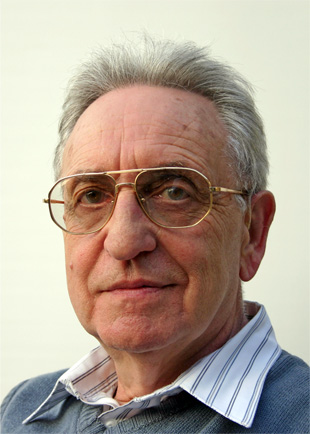
Jan Decleir is a prolific Belgian movie and stage actor born in Niel, Antwerp.
The Barneveldse Krant is a local daily newspaper in the Netherlands. It is printed, published, and distributed by Royal BDU in Barneveld. The newspaper is printed 6 times per week, with a focus on advertisements on Thursday and special weekend pages on Saturday. The Thursday edition is free of charge. It became a daily only in 1967, with 5 issues a week at that time.

The Flemish Diamond is the Flemish reference to a network of four metropolitan areas in Belgium, three of which are in the central provinces of Flanders, together with the Brussels-Capital Region. It consists of four agglomerations which form the four corners of an abstract diamond shape: Brussels, Ghent, Antwerp and Leuven.

Raymond van het Groenewoud is a Belgian musician. He was born in Schaerbeek, of Dutch descent, and he sings primarily in Dutch. His biggest hits include "Vlaanderen Boven", "Meisjes", "Je Veux de l'Amour", "Zjoske Schone Meid" and "Liefde voor Muziek". He refers to himself as a musician but also a poet, philosopher and clown.
Johannes (Jan) Maria van der Lans was a Dutch professor in the psychology of religion at the Catholic University of Nijmegen.

Cinema of Belgium refers to the film industry based in Belgium. Belgium is essentially a bi-lingual country divided into the Flemish (Dutch-speaking) north and the French-speaking south. There is also a small community of German speakers in the border region with Germany. Belgium is further a federal country made up of three regions and three language communities . Due to these linguistic and political divisions it is difficult to speak of a national, unified Cinema of Belgium. It would be more appropriate to talk about Flemish or Dutch-language cinema of Belgium and Walloon or French-language cinema of Belgium.
Tom Bouden is an openly gay Belgian artist, best known for his comics albums, which often satirize old-fashioned Belgian comics.

Paul Kempeneers is a Belgian philologist and linguist.

Carolus Petrus Eduardus Maria "Karel" van de Woestijne was a Flemish writer and brother of the painter Gustave van de Woestijne. He went to highschool at the Koninklijk Athenaeum at the Ottogracht in Ghent. He also studied Germanic philology at the University of Ghent, where he came into contact with French symbolism. He lived at Sint-Martens-Latem from April 1900 up to January 1904, and from April 1905 up to November 1906. Here he wrote Laetemsche brieven over de lente, for his friend Adolf Herckenrath (1901). In 1907 he moved to Brussels, and in 1915 he moved to Pamel, where he wrote De leemen torens together with Herman Teirlinck.
Onur Kaya is a Belgian professional footballer of Turkish descent who plays as an attacking midfielder for FC Kosova Schaerbeek.

Henri Paul René Ceuppens, who wrote under the pseudonym Ivo Michiels, was a Belgian writer.
Patrick Conrad is a Flemish painter, poet, screenwriter and novelist, and one of the founders of The Pink Poets. He also directed about twenty movies for cinema and television, including – selected for the Cannes Festival - the international cult film Mascara. As a painter and collage artist he showed his Work in about 40 solo exhibitions in Belgium and France and three retrospective exhibitions of his work: in 1975, in 2005 and in 2022 in the Verbeke Foundation. His work is part of important private collections in France, Belgium, England, Scotland, Germany, Holland, Denmark, Australia and U.S. He lived 34 years in the south of France and moved in 2023 to Porto Alegre (Brasil). In Belgium he is represented by the Paul Verbeke galery which published an artbook about his work.

Walter Stefaan Karel van den Broeck was a Belgian writer and playwright. He graduated as a teacher in Dutch and History (Lier), and he started his career as a teacher.

Michaël Henricus Gertrudis (Michiel) van Kempen is a Dutch writer, art historian and literary critic. He has written novels, short stories, essays, travel literature and scenarios. He was the compiler of a huge range of anthologies of Dutch-Caribbean literature and wrote an extensive history of the literature of Suriname, in two volumes.
Hans Vandekerckhove is a Belgian painter, living and working in Ghent. From 1975 to 1997 Vandekerckhove studied Art History at University Ghent, where he wrote his graduation thesis on David Hockney.

Wilhelmina Drucker was a Dutch politician and writer. One of the first Dutch feminists, she was also known under her pseudonyms Gipsy, Gitano, and E. Prezcier.

Ernest Van der Hallen was a Flemish writer and Catholic youth leader during the Interbellum. Van der Hallen was an inspirational figure for the Flemish nationalist youth movement.

Luc Piron is a Belgian artist. He is a painter and printmaker. He is also a photographer and experiments with the possibilities of computer art.
The 2021–22 season will be the 54th season in the existence of Fortuna Sittard and the club's fourth consecutive season in the top flight of Dutch football. In addition to the domestic league, Fortuna Sittard will participate in this season's edition of the KNVB Cup.

Tom Herck, born in 1984 in Sint-Truiden, Belgium, is a multidisciplinary Belgian artist currently residing in Ordingen. Drawing inspiration from his experiences in the underground football culture, illegal graffiti scene, and extensive travels worldwide, Herck's artistic expressions challenge societal norms with a rebellious and unconventional nature.













